


Guardrail Common Sensor
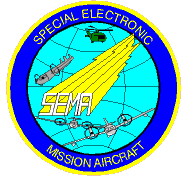
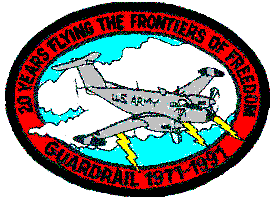 The Guardrail Common Sensor [GR/CS] is a Corps Level Airborne Signal Intelligence
(SIGINT) collection/location system that integrates the Improved
GUARDRAIL V (IGR V), Communication High Accuracy Airborne Location
System (CHAALS), and the Advanced QUICKLOOK (AQL) into the same
SIGINT platform -- the RC-12K/N/P/Q
aircraft. Key features include integrated COMINT and ELINT
reporting, enhanced signal classification and recognition, fast Direction Finding
(DF), precision emitter location, and an advanced integrated aircraft cockpit.
Preplanned product improvements include frequency extension, computer
assisted on-line sensor management, upgraded data links and the capability to
exploit a wider range of signals.
The Guardrail Common Sensor [GR/CS] is a Corps Level Airborne Signal Intelligence
(SIGINT) collection/location system that integrates the Improved
GUARDRAIL V (IGR V), Communication High Accuracy Airborne Location
System (CHAALS), and the Advanced QUICKLOOK (AQL) into the same
SIGINT platform -- the RC-12K/N/P/Q
aircraft. Key features include integrated COMINT and ELINT
reporting, enhanced signal classification and recognition, fast Direction Finding
(DF), precision emitter location, and an advanced integrated aircraft cockpit.
Preplanned product improvements include frequency extension, computer
assisted on-line sensor management, upgraded data links and the capability to
exploit a wider range of signals.
GR/CS provides near real-time SIGINT and targeting information to Tactical Commanders
throughout the corps area with emphasis on Deep Battle and Follow-on Forces
Attack support. It collects selected low, mid, and high band radio signals, identifies/classifies them, determines locations of their sources, and provides near-real-time reporting to tactical commanders. The system uses an integrated processing facility (IPF) which is the control, data processing, and message center for the overall system.
 Each system consists nominally
of twelve aircraft which normally fly operational missions in sets of three.
Up to three airborne relay facilities (ARF)/aircraft intercept communications, noncommunications emitter transmissions, and gather LOB and TDOA data. They then transmit this data to the IPF. The ARF/aircraft also serve as the relay platforms for communications between the IPF and the supported commands. The typical system configuration uses one Integrated Processing Facility (IPF), two or three Airborne Relay Facilities (ARFs), approximately nine (up to a maximum of 32) Commanders Tactical Terminals (CTTs), and an Auxiliary Ground Equipment (AGE) van. Special Purpose Equipment (STE) vans are included for maintenance and troubleshooting.
Each system consists nominally
of twelve aircraft which normally fly operational missions in sets of three.
Up to three airborne relay facilities (ARF)/aircraft intercept communications, noncommunications emitter transmissions, and gather LOB and TDOA data. They then transmit this data to the IPF. The ARF/aircraft also serve as the relay platforms for communications between the IPF and the supported commands. The typical system configuration uses one Integrated Processing Facility (IPF), two or three Airborne Relay Facilities (ARFs), approximately nine (up to a maximum of 32) Commanders Tactical Terminals (CTTs), and an Auxiliary Ground Equipment (AGE) van. Special Purpose Equipment (STE) vans are included for maintenance and troubleshooting.
This system incorporates the Communication High Accuracy Airborne Location System (CHAALS) to achieve target locations for its COMINT system, and CHALS-X, which is a continuation of
the project which developed the CHAALS precision location subsystem
currently in GR/CS systems 4 and 1. The CHALS-X system provides the targeting capability required to support the Division Commander's requirements to locate and kill the enemy by providing for precise location of High Value Targets (HVTs). Airborne
systems mixed with ground based systems will be capable of precisely locating
enemy weapon systems and units (regardless of whether the enemy uses
conventional or modern radios) producing target locations sufficiently accurate
for first round fire for effect by organic artillery. It utilizes
the previously developed Time-Difference-Of-Arrival/Differential Doppler
(TDOA/DD) techniques and incorporates advances in electronics state of the art
and distributed processing to provide for improved capabilities; increases
frequency range, adds frequency hopping radios to the target set, and decreases
size/weight/power requirements of processing subsystems (3 racks of computer
equipment now reduced to two boxes which fit into a standard 19 inch rack).
GR/CS Targeting accuracy is also provided by the ELINT system. Ground to ground (including CTT) communications links also provide an interface with fixed locations and tactical users. Automated addressing to CTT field terminals provides automated message distribution to tactical commanders in near real time. Planned improvements include expanded COMINT/ELINT collection, LPI capability, embedded training, CTT(3 channel) retrofit, and automated reporting.
The Radio Remote Receiving Set (AN/ARW-83) is commonly referred to as the Airborne Relay Facility (ARF). The ARF consists of equipment installed in a modified Beechcraft Super King Air aircraft with a military designation of RC-12. The ARFs are manned only by the pilots during a mission. ARF mission equipment is remotely controlled by operators in the Integrated Processing Facility (IPF). The Guardrail systems currently in service include the Guardrail V (RU-21H
aircraft), the Guardrail Common Sensor Minus (RC-12H aircraft), and the Guardrail Common Sensor
(RC-12K/N/P aircraft). Guardrail Common Sensor (GRCS) combines the Improved Guardrail V
(IGRV) Communication Intelligence (COMINT) sensor package with the Advanced Quicklook
electronics signals (ELINT) intercept, classification, and direction-finding capability, and a
Communication High Accuracy Airborne Location System (CHAALS).
GRCS shares technology with the
Ground-Based Common Sensor, Airborne Reconnaissance Low, and other airborne systems.
GRCS comprises a series of special purpose detecting systems - AN/USD 9B thru E. The GRCS systems are tactical, remotely controlled, airborne mission equipment, and ground-based intercept and emitter location systems. They have an external near real-time reporting capability that can be operated in six modes (local, isolated, remote, interoperable, training, or maintenance/calibration). These systems are assigned to a B company, military intelligence battalion, aerial exploitation, as part of a corps military intelligence brigade.
The GRCS System 1, AN/USD-9C, and System 2, AN-USD-9E, are the latest addition to this family. They have the additional capability to operate worldwide via the GRCS Tethered Medium Earth Terminal (TMET) and the Direct Air to Satellite Relay (DASR) Aircraft (RC-12Q). Other major system improvements are:
- The new UNIX-based work stations.
- Faster (Micro 5) mainframe computers.
- The fiber-optics distributed data interface (FDDI) local area network (LAN).
- The GRCS Data Distribution System (DDS), elementary special signals processing.
- The GRCS Integrated Processing Facility (IPF) rapid deployment capability (two vans minimum vice four).
- The entire system (less aircraft) will be C-130 transportable.
Information is processed and reported to joint consumers via TRIXS broadcast primarily over the Joint Tactical Terminal (JTT) which is a subsystem of the GRCS DDS.
A typical mission requires the aircraft to orbit to the rear and parallel to the forward line of own troops (FLOT). The IPF sends commands to and receives information from the Airborne Relay Facility (ARF) through a secure data link. The operators in the IPF process the collected information and report the intelligence to the tactical commanders and other possible joint consumers via the JTT relay on board the aircraft.
| LIN
/ MODEL / Nomenclature |
| |
Number of Operator
Positions |
MOS |
|
| Z04118
-- AN/ARW-83 (V) 5-- Improved GUARDRAIL, AN/USD-9A |
| |
Van #1: |
11 |
98C, 98D, 98G |
| |
Van #2: |
2 |
98C, 98G |
| |
Van #3: |
4 |
98C, 98G |
| |
Van #4: |
10 |
98C, 98D, 98G |
| |
|
|
|
| Z04300--AN/ARW-83
(V) 7--GUARDRAIL Common Sensor, Sys 1-- AN/USD-9C |
| |
Van #1: |
10 |
98C, 98G, 98J |
| |
Van #2: |
11 |
98C, 98G, 98J |
| |
Van #3: |
7 |
98C, 98G, 98J, 98K |
| |
Van #4: |
3 |
98G, 98J |
HISTORICAL BACKGROUND:
Jun 84 Contract awarded for GR/CS Systems 3 and 4.
Dec 88 GR/CS (minus) System 3 fielded to Korea.
Jun 89 AC-12K Production award (System 1).
Aug/Sept 90 GR/CS Systems 1 and 2 IPF and ARF Production contracts awarded.
Aug 91 GR/CS System 4 fielded to USAREUR.
Apr 94 GR/CS FY94-99 Program and Acquisition Plan approved by HQDA.
Aug 94 GR/CS System 1 Fielded to FORSCOM.
REQUIREMENTS DOCUMENT: ROC, 1 Oct 84, updated Nov 85 and revised in Apr 92.
TYPE CLASSIFICATION: GR/CS System #1 type classified LP.
|
EVENT SCHEDULE FISCAL YEAR |
96 |
97 |
98 |
99 |
00 |
01 |
|
QTR |
1 2 3 4 |
1 2 3 4 |
1 2 3 4 |
1 2 3 4 |
1 2 3 4 |
1 2 3 4 |
|
System 2 |
----------- |
----------- |
----------- |
--1 |
|
|
PLATFORM CHARACTERISTICS:
RU-21H RC-12D/H RC-12K/N/P
Mission weight/payload: 10,200/1,126 lb 14,200/1,600 lb 16,000/2,000 lb
Cruise speed: 176 kt 200 kt 250 kt
Endurance: 4 hr 5(+) hr 5(+) hr
Max range: 1,000 naut mi 1,200 naut mi 1,200 naut mi
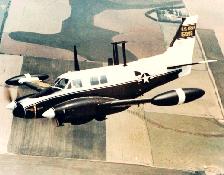
GUARDRAIL I
RU-21 [1971]
|

GUARDRAIL II/IIA
RU-21 [1972]
|
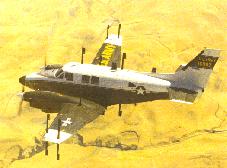
GUARDRAIL IV
RU-21 [1974]
|
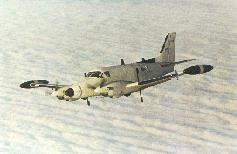
GUARDRAIL V
RU-21 [1978]
|

GUARDRAIL V
RU-21 [1978]
|

IMPROVED GUARDRAIL V
RC-12D [1984]
|
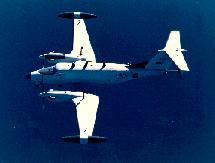
IMPROVED GUARDRAIL V
RC-12D [1984]
|
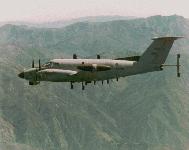
IMPROVED GUARDRAIL V
RC-12D [1984]
|
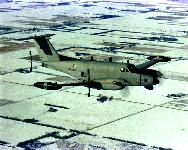
IMPROVED GUARDRAIL V
RC-12D [1984]
|
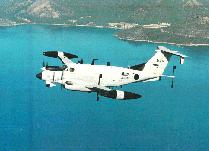
GUARDRAIL COMMON/SENSOR
(SYSTEM 3)
RC-12H [1988]
|

GUARDRAIL COMMON/SENSOR
(SYSTEM 4)
RC-12K [1991]
|
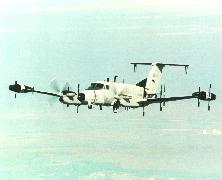
GUARDRAIL COMMON/SENSOR
(SYSTEM 1)
RC-12N [1995]
|
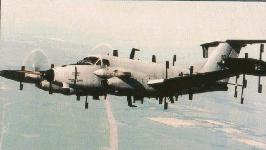
GUARDRAIL COMMON/SENSOR
(SYSTEM 1)
RC-12N [1995]
|
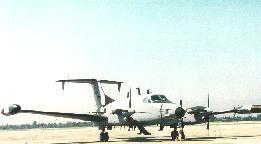
GUARDRAIL COMMON/SENSOR
(SYSTEM 2)
RC-12P [1998]
|

GUARDRAIL COMMON/SENSOR
RC-12Q [1998]
|
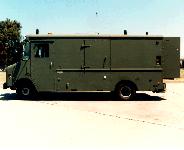
Auxiliary Ground Equipment (AGE) Van
Flightline Test Set
AN/ARM-163(V)
|
SYSTEM SUMMARY
FEATURES:
- Components:
- ' 12 x RC-12 aircraft
- ' 4 x IPF vans
- ' 3 x IDL trackers . CTT
- Sensors:
- Advanced QUICKLOOK ELINT collection & DF
- COMINT coll & DF
- Comms High Accuracy
- Airborne Location System
- Flexibility:
- ' Remote relay capabilityC
- ' Scaleable system for rapid deployment
- ' Aircraft is self deployable
|
PERFORMANCE AND CHARACTERISTICS:
- ' LOS coverage 450 km from aircraft
- ' Mission altitude: 20,000-30,000 ft
- ' Endurance: 5.5 hrs
- ' Data link range: 150 mi LOS
- Targets:
- ' Communications emitters
- ' Jammers
- ' Noncomms emitters
|
PRIME CONTRACTOR: ESL (Sunnyvale, CA)
Beech Aircraft (Wichita, KS)
SUBCONTRACTORS:
ESL; Sunnyvale, CA
Beech Aircraft; Wichita, KS
ESCO; St. Louis, MO
IBM; Owego, NY
UNISYS; Salt Lake City, UT
Deployment
One GR/CS system is authorized per Aerial Exploitation Battalion (AEB) in the MI Brigade at each Corps. Guardrail provided collection coverage along the inter-German border from 1972 through 1990, in Korea from 1974 to the present, and in Central America from 1983 through 1994. Two systems deployed to Southwest Asia during Operations DESERT SHIELD and DESERT STORM. GRCS (Minus) was fielded to Korea in 1988. The first GRCS system was fielded to Europe in 1991, and the second was fielded to XVIII Corps in 1994 with a remote relay capability that allowed forward deployment of aircraft while the ground processing facility remains in CONUS. As of May 1996, one system remained in Korea, one system was in Europe supporting Operation JOINT ENDEAVOR, the XVIII Airborne Corps system had deployed in support of the combined exercise Atlantic Resolve, and the fourth and final GRCS system is in the Engineering and Manufacturing Development phase in California to be fielded in FY97.
Related Programs
Sources and Methods
http://www.fas.org/irp/program/collect/guardrail.htm
Maintained by Steven Aftergood
Created by John Pike
Updated Tuesday, February 22, 2000 8:31:57 PM

 The Guardrail Common Sensor [GR/CS] is a Corps Level Airborne Signal Intelligence
(SIGINT) collection/location system that integrates the Improved
GUARDRAIL V (IGR V), Communication High Accuracy Airborne Location
System (CHAALS), and the Advanced QUICKLOOK (AQL) into the same
SIGINT platform -- the RC-12K/N/P/Q
aircraft. Key features include integrated COMINT and ELINT
reporting, enhanced signal classification and recognition, fast Direction Finding
(DF), precision emitter location, and an advanced integrated aircraft cockpit.
Preplanned product improvements include frequency extension, computer
assisted on-line sensor management, upgraded data links and the capability to
exploit a wider range of signals.
The Guardrail Common Sensor [GR/CS] is a Corps Level Airborne Signal Intelligence
(SIGINT) collection/location system that integrates the Improved
GUARDRAIL V (IGR V), Communication High Accuracy Airborne Location
System (CHAALS), and the Advanced QUICKLOOK (AQL) into the same
SIGINT platform -- the RC-12K/N/P/Q
aircraft. Key features include integrated COMINT and ELINT
reporting, enhanced signal classification and recognition, fast Direction Finding
(DF), precision emitter location, and an advanced integrated aircraft cockpit.
Preplanned product improvements include frequency extension, computer
assisted on-line sensor management, upgraded data links and the capability to
exploit a wider range of signals.



 Each system consists nominally
of twelve aircraft which normally fly operational missions in sets of three.
Up to three airborne relay facilities (ARF)/aircraft intercept communications, noncommunications emitter transmissions, and gather LOB and TDOA data. They then transmit this data to the IPF. The ARF/aircraft also serve as the relay platforms for communications between the IPF and the supported commands. The typical system configuration uses one Integrated Processing Facility (IPF), two or three Airborne Relay Facilities (ARFs), approximately nine (up to a maximum of 32) Commanders Tactical Terminals (CTTs), and an Auxiliary Ground Equipment (AGE) van. Special Purpose Equipment (STE) vans are included for maintenance and troubleshooting.
Each system consists nominally
of twelve aircraft which normally fly operational missions in sets of three.
Up to three airborne relay facilities (ARF)/aircraft intercept communications, noncommunications emitter transmissions, and gather LOB and TDOA data. They then transmit this data to the IPF. The ARF/aircraft also serve as the relay platforms for communications between the IPF and the supported commands. The typical system configuration uses one Integrated Processing Facility (IPF), two or three Airborne Relay Facilities (ARFs), approximately nine (up to a maximum of 32) Commanders Tactical Terminals (CTTs), and an Auxiliary Ground Equipment (AGE) van. Special Purpose Equipment (STE) vans are included for maintenance and troubleshooting.















